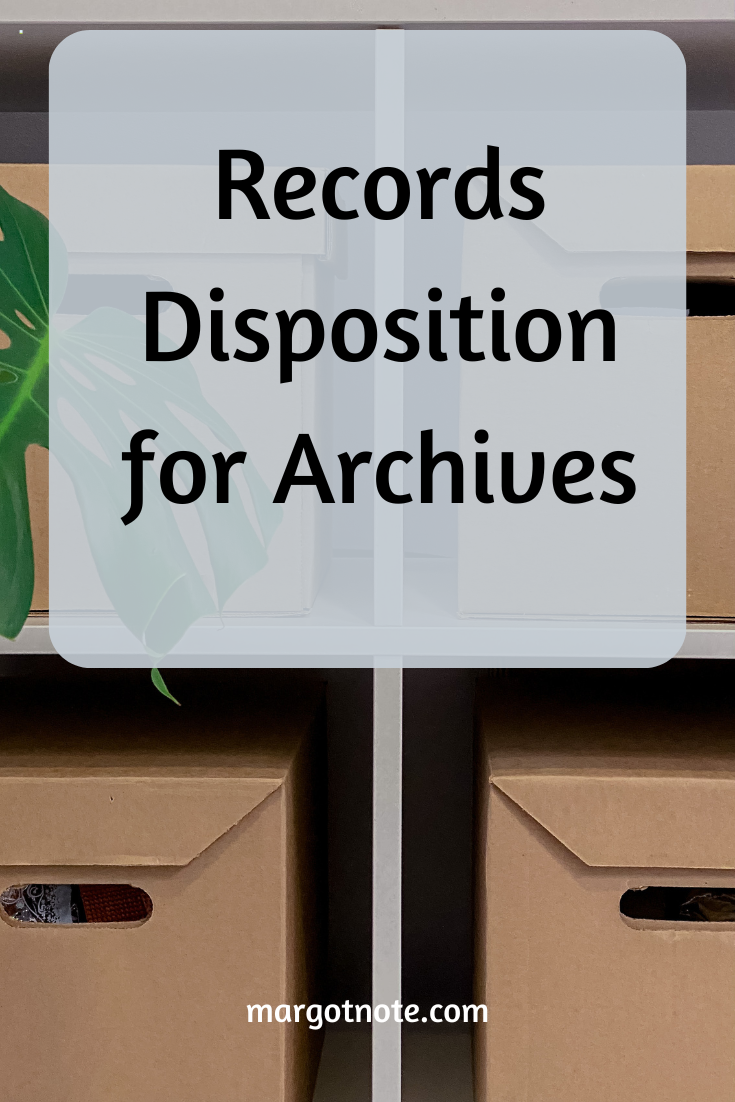Determining the flow of an organization’s records ensures that archivists schedule materials for disposition.
In addition, archivists can liaise with departments within their organizations to help retain significant documentation and inclusion of those records within the archives. If there is not already one, creating a records retention schedule should be one of the archivists’ first tasks after an archival assessment.
Records Retention Schedule
The records retention schedule organizes a list of documents by department, thus identifying records, their creators, their retention periods, and their disposition. The finance, legal, and administrative departments and department heads should supply input to draft the schedule. Although a spreadsheet can outline a basic retention schedule, organizations may wish to consult a records manager or legal counsel to assist in this process, especially for highly regulated industries. Once formalized, the records retention schedule will assist in the straightforward assessment of materials to determine short- and long-term retention. Most records subject to the retention schedule will easily fall within two areas: lifecycle (temporary) or archival (permanent) records.
Organizations retain temporary documents for determining lengths of time for legal purposes. Determining the appropriate lifespan ensures that an organization keeps these records only so long as legally required. A records retention schedule and policy sets calendared destruction dates to dispose of the records once they are no longer needed or the lifespan expires.
On the other hand, institutions retain other records in perpetuity. These documents comprise the bulk of the archival collection and include many materials that chronicle the institutions’ operations.
Identifying these record categories assist in managing documents. Handling temporary documents leaves more time for the detailed work of managing archival materials. Designating areas to retain documents before disposition helps isolate these documents from the archival collection and makes monitoring for ultimate destruction easier. A spreadsheet or database can track retention. Archivists or records managers can use the contents of the boxes, such as date range, department, and box or location number, as data fields. Once they have reached the retention cut-off, employees can dispose of them. Shredding documents the organization and ensures compliance with state and federal laws. Many shredding companies offer secure mobile shredding or off-site document destruction.
Retention for Archives
What constitutes records of enduring value will differ slightly for each institution and reflect the organization’s mission. However, archives should permanently retain items that chronicle the institution and its place in a historical context.
The archives department should set a retention policy for materials and include this policy in recordkeeping manuals with the retention schedule. In addition, the policy should include a checklist of desired archival documents to help with retention and establish an order for the records to be maintained once employees move the materials to the archives.
Filling in Gaps
Once archivists have a handle on an organization’s current documents by creating a retention policy and schedule, they can focus on materials that are missing. A collection or acquisition policy identifies the materials the archives seeks to acquire. For most institutions, the collection policy should include only materials that directly support or enhance the organization. Donations of materials should fall in line with this policy. Establishing clearly defined collecting areas might consist of areas outside the immediate organization.
The collection policy should also note material to supplement gaps in archival holdings, such as material from the institutions’ early years. An oral history program is an excellent way to capture the history of an organization. Forging meaningful relationships with people involved in the organization’s founding may be the most important step toward guaranteeing document retention. Doing so increases the archives’ potential for scholarship, legacy, and shared resources.
The blog was originally published on Lucidea's blog.
Get Started
Looking for archival advising, records management, and historical research services? Click below to speak with an expert consultant.































